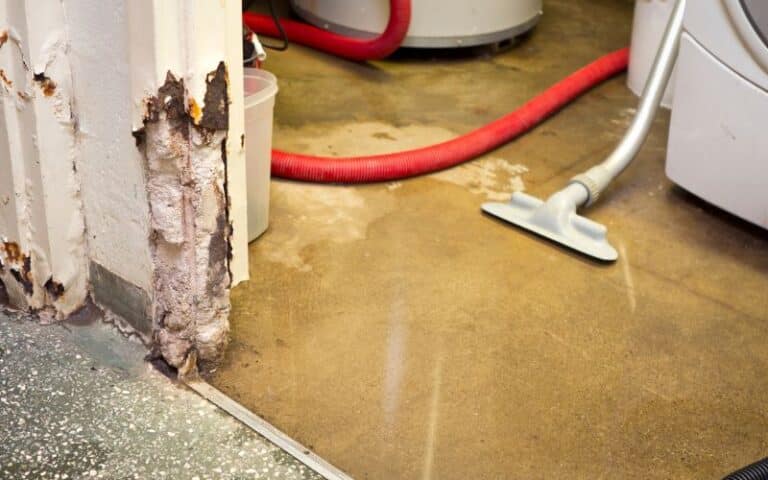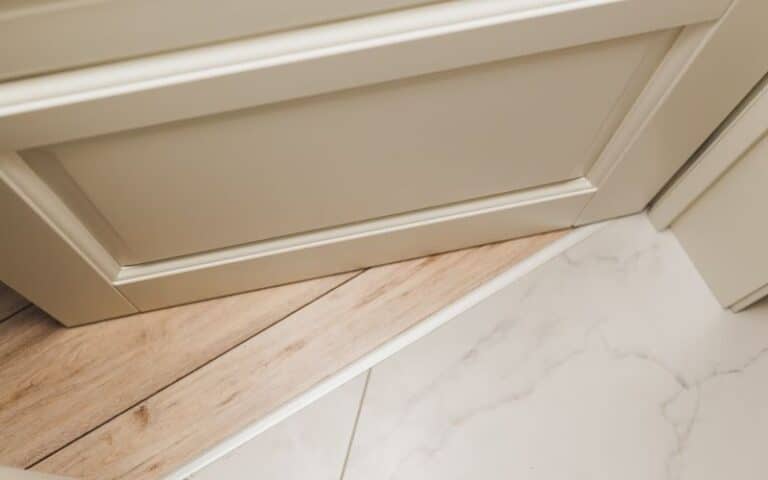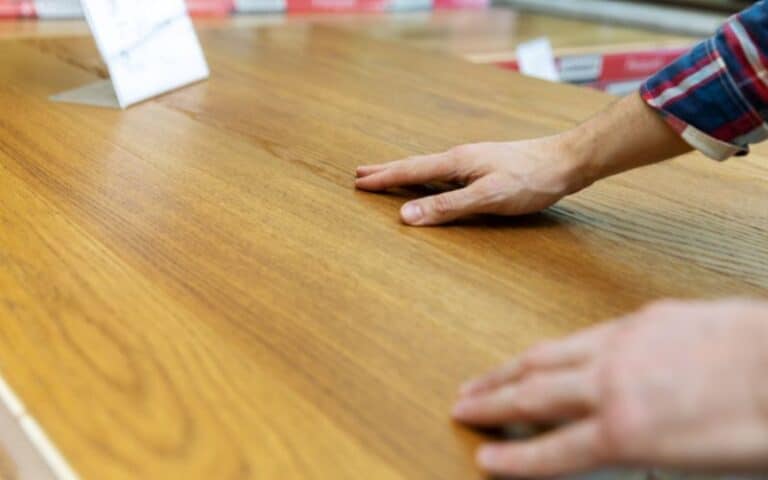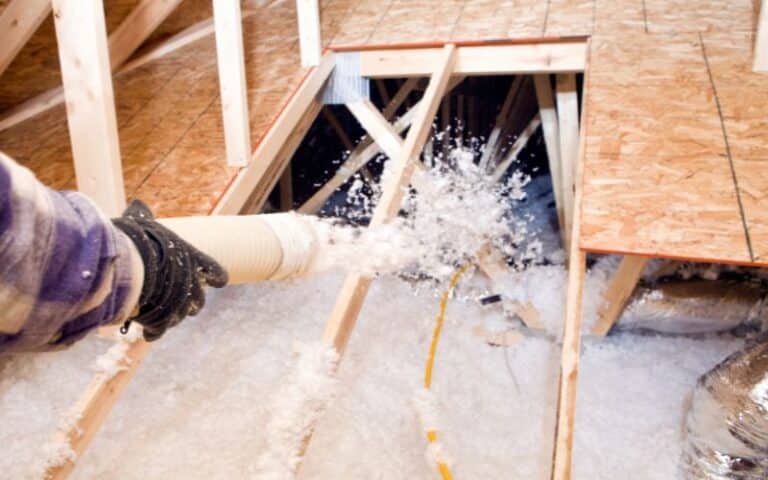Polyurethane is a reliable friend to every person who has ever needed a solution for wear and tear on their homes.
It’s also an amazing synthetic resin with a reputation for being durable, water-resistant, and protective when used on wooden surfaces and furniture.
However, if you’re particularly interested in whether or not Polyurethane is suitable for painted floors, you’re in the right place.
You can apply Polyurethane over all painted floors, such as latex, spray, acrylic, and enamel. However, you must ensure that the paint is fully cured and neat before you apply the Polyurethane for best results. Also, you can pick between water-based and oil-based Polyurethane based on your preferences.
In this article, I’ll explain if you can apply Polyurethane over a painted floor and provide a detailed guide on how best to apply it.
By the end, you’ll know which Polyurethane is best for application and its pros and cons on painted floors.
Ready for a Flooring Quiz?
Can You Use Polyurethane Over a Painted Floor? Is it Ideal?

You can apply Polyurethane over any painted floor and get a smooth, aesthetically pleasing finish.
It’s never a bad idea to improve the shine and durability of your painted floors with Polyurethane, whether newly painted or not.
However, it would help to allow newly painted floors to dry properly between twenty-one and thirty days before applying Polyurethane.
Below are some points to prove that applying Polyurethane to painted floors is an ideal choice;
#1. It Prevents Your Floors from Scratches
Polyurethane is a magic worker for keeping surfaces smooth and scratch-free, so your floor will be spotless.
You’ll no longer have to worry about rough floors that are unpleasant to the eyes, and you won’t have to repaint the floors for years.
Also, Polyurethane is stronger than other polymers, so you won’t get this benefit if you opt for a lesser polymer.
#2. It Prevents Damage from Solvents
If you live in a home or building where you constantly use solvents and are likely to spill them, you should cover your floors with Polyurethane.
This is ideal because Polyurethane is laced with chemicals that fight off solvents that could cause temporary or permanent damage to your floors.
#3. It is Durable and Cost-efficient
Polyurethane coats can last for over forty years; some professionals claim that they can last for up to sixty years with proper maintenance.
Interestingly, you can maintain a floor coated with Polyurethane by reapplying the topcoat to revive its shine after some years.
This maintenance method is cost-efficient because you’re not required to redo the polyurethane coats or the flooring from scratch.
Most flooring systems would have to be completely replaced after half their lifetime, but polyurethane floors save you that trouble.
#4. It is Flexible and Tolerant
Polyurethane is often praised because of its flexibility when it comes in contact with items that should cause it to lose shape.
Consider coating your floors with Polyurethane if they are stacked with heavy items or many people walk across them daily.
Pros and Cons of Using Polyurethane Over Painted Floor
Polyurethane is compatible with all types of painted floors and offers many benefits when used, but it also has flaws.
Therefore, before deciding, you’ll need to be thoroughly informed about the advantages and disadvantages of using Polyurethane on your painted floors.
To help you make an informed decision, below is a table that addresses the pros and cons of applying Polyurethane over painted floors;
| Pros of Polyurethane | Cons of Polyurethane |
|---|---|
| It is long-lasting and reliable. | It takes longer to dry because it needs to be cured. |
| It is very effective in combating wear and tear. | It is more expensive than other polymers. |
| It is compatible with all surfaces in the home. | The waiting period between applying coats is longer. |
| The final finish surpasses that of other polymers. | It’s easily flammable in its liquid form. |
| It has a higher chemical resistance than other polymers. | It is toxic to the skin when touched during application. |
| It protects surfaces from discoloration and spotting. | It cannot be sprayed to quicken the application. |
How To Apply Polyurethane Over Painted Floors?
If you’ve been searching for a detailed guide on applying Polyurethane over painted floors, you’re in the right place.
As you read further, you’ll realize how fulfilling and straightforward the process of applying Polyurethane to painted floors is.
However, before you delve into the process, you’ll need to gather the items mentioned in the list below;
- Cleaning agent
- Water or oil-based Polyurethane
- Sanding equipment
- A vacuum
- A lint-free piece of cloth
- Protective glasses and gloves
- Paintbrush or roller
If you’ve successfully gathered the items mentioned above, then you can begin the process of applying Polyurethane by following the steps below;
Step 1: Ensure that the Painted Floors are Cleaned
It was mentioned earlier that you need to apply Polyurethane over a painted floor that is neat, so if yours isn’t, you’ll have to fix that first.
You’ll need to clean the dirt, debris, or stains on the painted floor with detergent or any reliable cleaning agent until it’s squeaky.
However, if the paint in your home has aged, you should use a concentration of Trisodium Phosphate to clean it while wearing protective gear.
Step 2: Sand the Floor and Clean the Residue
You’ll need to lightly sand the floor after cleaning it to ensure you get a smooth and clean finish after applying Polyurethane.
If there are any unwanted scratches on the paint’s surface, sanding will also smoothen them to make the application easier.
You can use a palm sander or 120-grit sandpaper to sand the floors, and when you’re done, you have to clean up the residue.
To clean the sanding residue, you can use a vacuum cleaner piece of cloth to thoroughly go over the freshly sanded surface till it’s smooth.
After cleaning the residue, allow the sanded floor to dry before you proceed to the next step.
Step 3: Apply Polyurethane to the Floor and Sand it Again
It’s time to apply the first coat of Polyurethane over the painted floors, and you should’ve already decided between oil-based and water-based Polyurethane.
You must make sure that you apply a thin and clear coat over the painted floors using a paintbrush, pad, or roller.
When you’re done applying the first coat of Polyurethane, give it some time to cure while you prepare to sand it again.
After the Polyurethane has dried, you’ll need to sand the surface with 220-grit sandpaper to remove any roughness that might affect the next coat.
Don’t forget to clean the surface again after sanding it so that the next coat of Polyurethane can adhere to the floor.
Step 4: Apply a Second Coat of Polyurethane
Lastly, carefully smooth a second coat of Polyurethane over the floor to solidify the first coat.
When the second coat has dried, you can sand the surface again and clean it thoroughly to achieve a smooth finish.
After this is done, you’ll need to wait for a day before stepping on the floors to avoid ruining the work that’s been done.
What Is the Best Polyurethane for Painted Floors?
The Water-based Polyurethane is the best type for finishing painted floors based on the testimonies of various users.
Water-based Polyurethane has a clear color that gives your painted floors a beautiful, glossy look that’s impossible to overlook.
However, aside from its looks, water-based Polyurethane is also long-lasting and beneficial in combating stains and scratches when used indoors.
It is also mixed with a catalyst before application, making the coating even stronger and assuring you of its durability.
This doesn’t mean that oil-based Polyurethane is a less efficient finishing, though; it also has its impressive strengths.
Both types of Polyurethane give an amazing finish on painted floors, but the final look depends on which one you choose.
For example, oil-based Polyurethane is best for outdoor projects because it can withstand extreme weather conditions.
Water-based Polyurethane, on the other hand, is best for indoor projects because it is aesthetically pleasing and cannot withstand extreme weather.
However, if you need further clarification before you choose a type of Polyurethane for your floors, you can contact a licensed professional for advice.
Frequently Asked Questions
Is Polyurethane Waterproof?
Polyurethane is not waterproof but water-resistant, which means it will protect your floors from absorbing liquids that could cause damage.
How Long Does it Take for Polyurethane to Harden?
Polyurethane can take three to thirty days to cure completely, so it’s best not to step on the coating until you’ve confirmed it’s dry.
How Many Coats of Polyurethane Are Needed?
You’ll need two coats of Polyurethane to finish a painted floor, but you can use three coats for better results.






